Electrical equipment, including luminaires, may only be marketed inside the EU when it complies with the basic requirements of applicable European directives (implemented as national law). One of those requirements is photobiological safety. Its consideration is required by the "Directive on the minimum health and safety requirements regarding the exposure of workers to risks arising from physical agents (artificial optical radiation)" (2006/25/EC) as well as the European directive on general product safety (GPSD), 2001/95/ EC and the Low Voltage Directive (LVD), 2014/35/EU.
Photo biological safety
For the rating of photobiological safety of the optical radiation generated by lamps, there are measuring regulations and assessment scales established in the international standard IEC 62471:2006. They have been implemented as EN 62471:2008 in Europe, and subsequently also in Germany as DIN EN 62471:2009-03; VDE 0837-471:2009-03. They conform to the European Directive 2006/25/EC.
Light sources are rated with regard to various hazards:
Actinic UV eye and skin hazard
Eye hazard in the UV-A spectral range
Photochemical retina hazard (blue light hazard)
Photochemical retina hazard – small light source
Thermal retina hazard
Thermal retina hazard – slight visual stimulus
IR eye hazard
Thermal skin hazard
For all types of hazards there are measuring methods as well as radiance or irradiance thresholds according to which light sources can be categorised into risk groups (RG) of levels 0 through 3. Specifically:
RG0 There is no risk. There is no danger of harming the eye, even when looking in the light source’s direction for extended periods of time (unlimited exposure period).
RG1 There is a slight risk. Damage to the eye will not occur, even when looking straight into the light source’s direction for limited periods of time (limited exposure period).
RG2 There is a moderate risk. Damage to the eye is avoided by an averting reaction. This assumes that looking into the light source is perceived as sufficiently uncomfortable. The radiance or irradiance threshold is established at a level that avoids radiation eye damage during the time which passes before looking away (short exposure period).
RG3 There is a high risk. Even a short glance into the light source can cause damage to the eye.
The risk groups are based on a common reference distance between eye and light source. Upwards of a categorisation into group RG2, light sources must be labelled and marked with a warning indicating the photobiological hazard as well as possibilities for preventing eye damage.
These measurement methods and classifications can also be applied to LED light sources although these do not feature a socket for replacement in a luminaire and are thus not lamps in a technical sense. The luminaire standard EN 60598-1:2015 further specifies that the rating according to IEC 62471:2006 can also be applied to luminaires with permanently integrated light sources. The main focus of this process is on LED products and possible hazards due to blue light (blue light hazard, photoretinitis). Extensive studies have shown that hazards of this nature can occur under unfavourable conditions when using LED components with commercially available luminaire technology ("Photobiological safety of light-emitting diodes (LED)", Dr. rer. nat. Ljiljana Udovičić et al., Bundesanstalt für Arbeitsschutz und Arbeitsmedizin, Dec. 2012).
The blue light hazard is based on a photochemical reaction in the eye which can be triggered by visible light, particularly in the wavelength range between 400 nm and 500 nm.
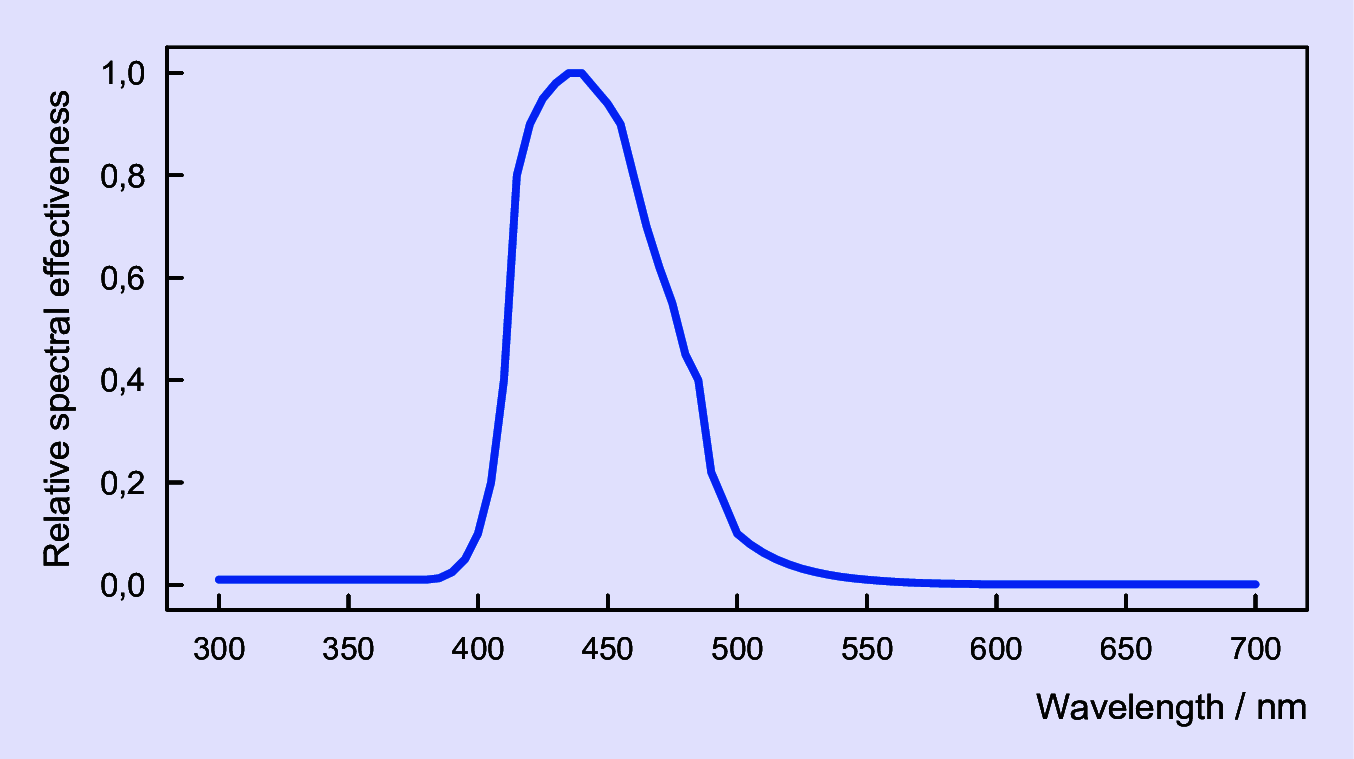
Figure 3.180: The spectral effect function B(λ) for photochemical retina hazards peaks in the spectral range between 435 nm and 440 nm.
The risk groups of levels 0 to 3 for blue light hazard including respective thresholds and exposure periods are listed in table. The thresholds relate to radiometric radiance or radiation intensity, weighted using the spectral effect function B(λ) for photochemical retina hazards (see figure). A conversion to visually perceivable luminance or illuminance is possible where the light's spectral composition is established.
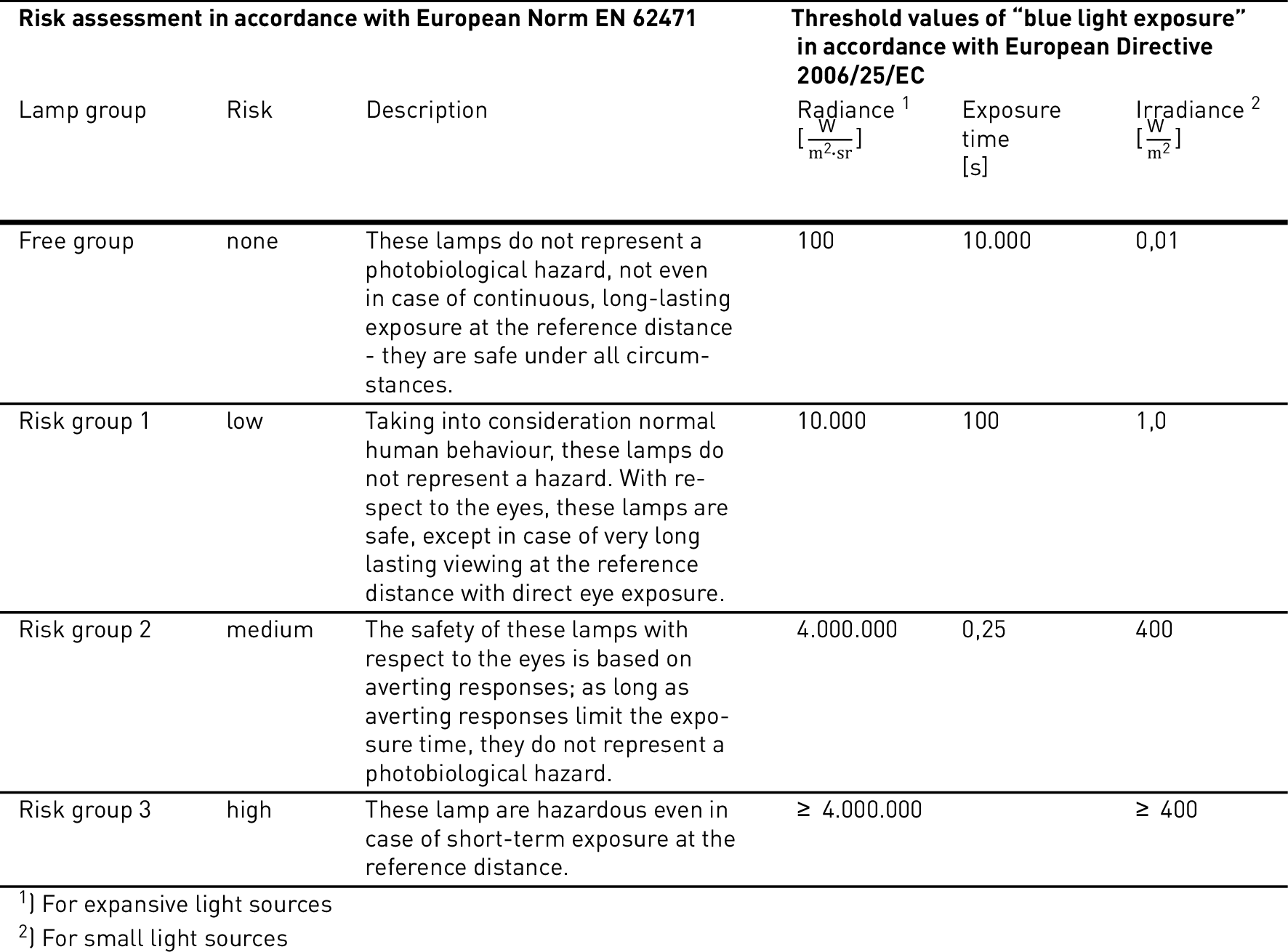
Table 3.135: Risk groups for continuous wave lamps according to lamp safety standard EN 62471 and "blue light hazard" thresholds.
The list above makes a distinction between viewing extensive light sources and small light sources in terms of photochemical retina hazards (blue light hazards). Small light source refers to those light sources which appear in the field of vision with an angle extension α smaller than the characteristic reception angle of 11 mrad (1.25°) of the eye receptor γ. Therefore, the rating depends on the distance between light source and eye (see figure) which is assumed to be ≥ 20 cm for photometric applications. For a distance of 20 cm, the "small" light source would have an edge length of 2.2 mm, which means that individual LEDs can usually be classified as "small" light sources due to their small construction size.
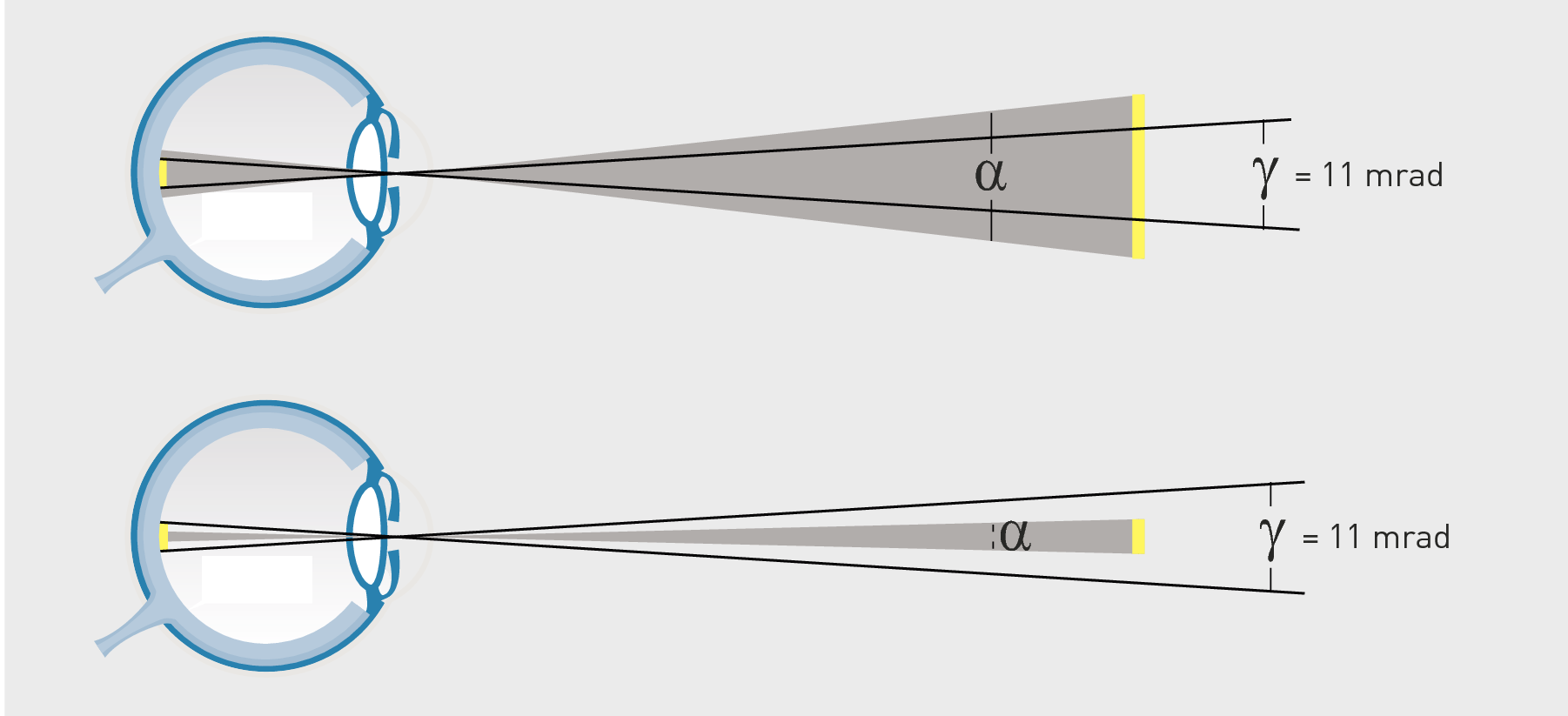
Figure 3.181: Ratio of radiation source angle extension α and receiving angle γ of the eye receptor
In "small" light sources, it is no longer the radiation density which matters, but rather the irradiance they create at the eye. This value decreases in proportion to the square of the distance between light source and observer according to the photometric inverse-square law.
If the installed light source has already been tested, there is no need to test the luminaire for blue light hazards again. The light source's risk group rating can be applied directly to the luminaire. This is possible because the installation in a luminaire cannot elevate radiation hazards. A lower rating is possible if tests on the luminaire result in a correlatively decreased risk.
Besides measurement and rating, EN 60598-1 also establishes luminaire approval and labelling in terms of photobiological safety. This requires a distinction between luminaire types for varying applications.
Fundamentally, it must be ensured that luminaires feature a maximum hazard level as low as risk group RG1 in appropriate use.
The radiometric irradiance threshold for risk group RG1 is 1.0 W/m2.
For luminaires, the respective photometric illuminance Ethr is specified, which incorporates spectral light composition.
For luminaires rated higher than RG1, labelling with a pictogram is required.
The attachment point is specified in table.
For luminaires rated higher than RG1, notes regarding the achievement of lowered respective risk through application conditions may be required.
For luminaires exceeding the irradiance threshold of 1.0 W/m2 for the specified reference distance, a minimum distance must be specified at which irradiance falls below the threshold.
For luminaires with LED modules rated higher than RG1 which become directly visible during maintenance measures, the pictogram displayed above must be visible during maintenance and the installation instructions must contain a warning note (see table).
For nursery luminaires, the maximum permissible risk group according to the standard is RG1 (see table).
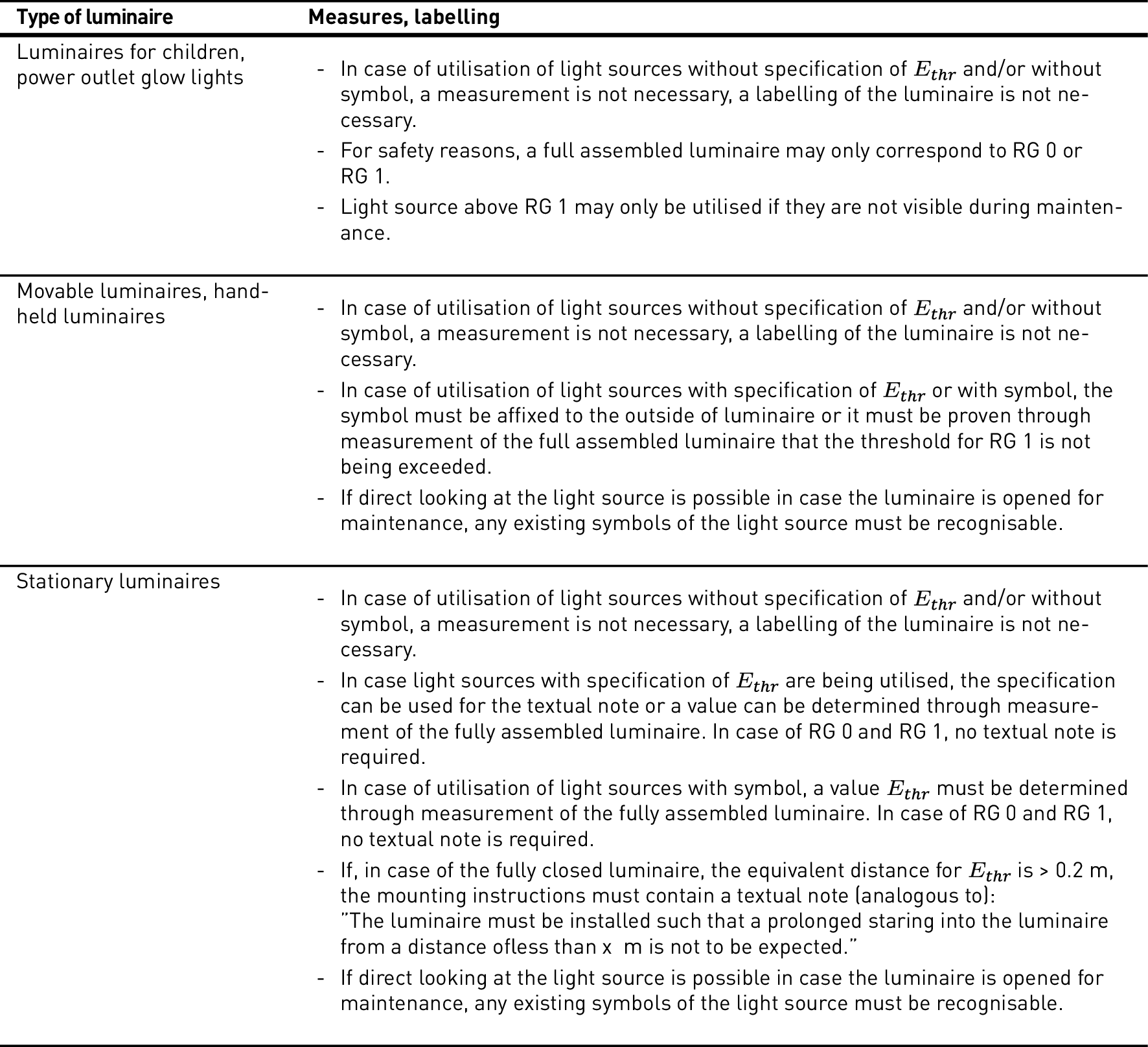
Table 3.136: Luminaire labelling regarding blue light hazards
In the context of luminaire ENEC certifications by the VDE and other testing institutions, a photobiological safety test is always performed as well.
TRILUX indoor luminaires in operating positions conform to risk group RG1 at minimum on principle. In rare cases concerning series which have existed for longer periods of time, LED modules with classification RG2, which become directly visible during luminaire maintenance, are installed in TRILUX luminaires (see figure).
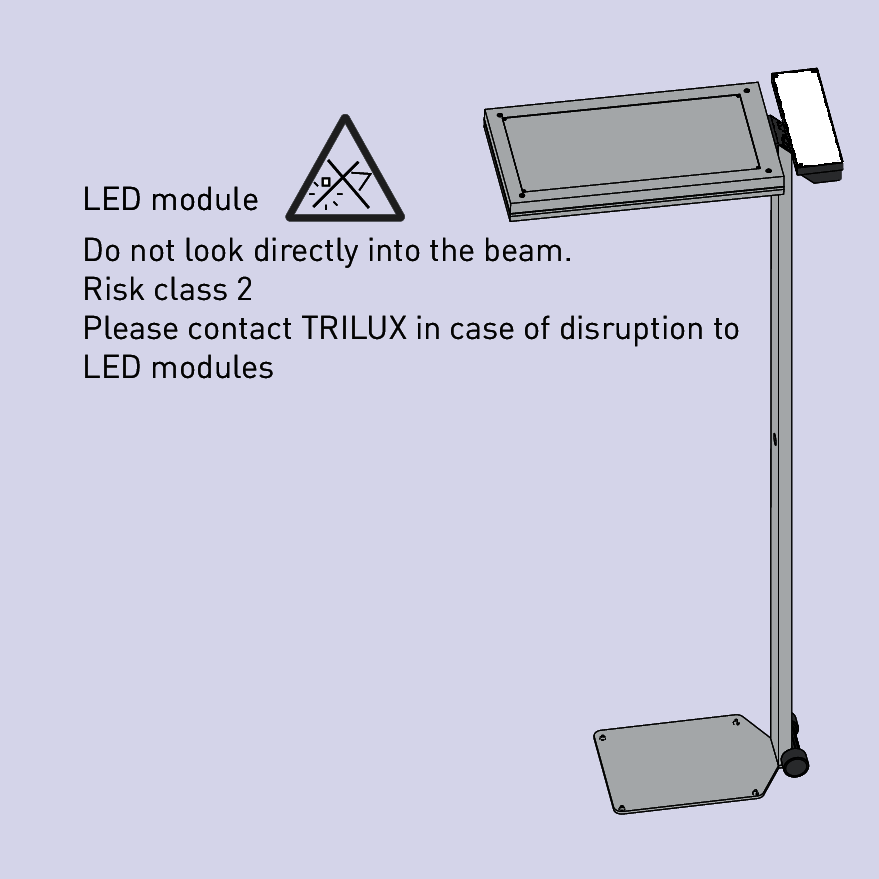
Figure 3.182: The indirect light component LED module can be viewed directly during maintenance, but not in the operating position. A note in the installation instructions and on the top of the luminaire respectively is required.